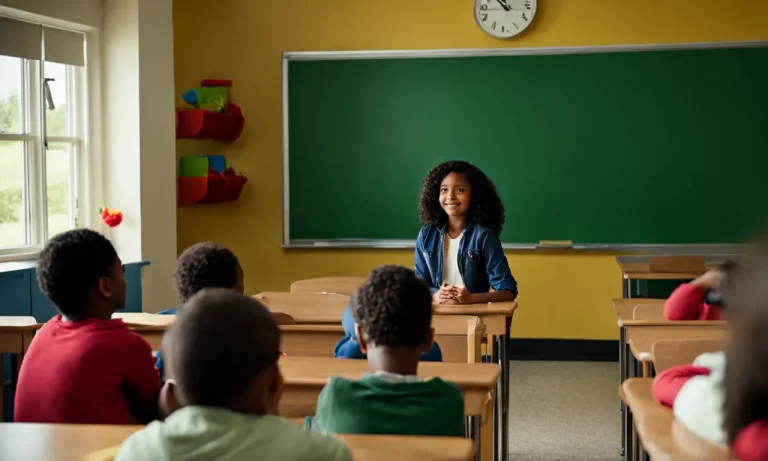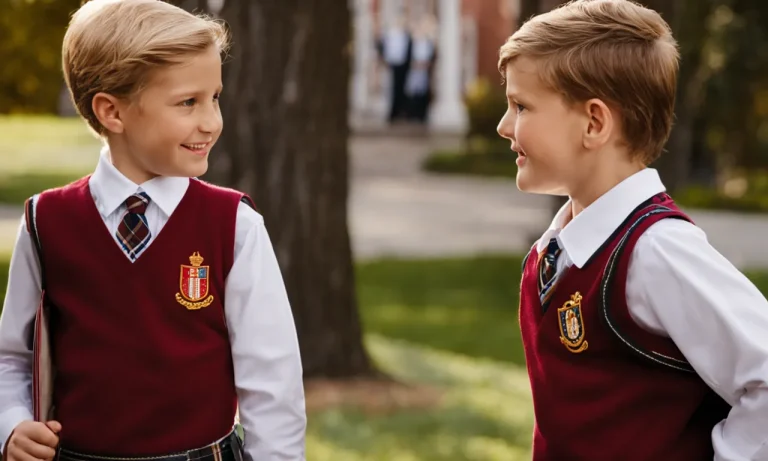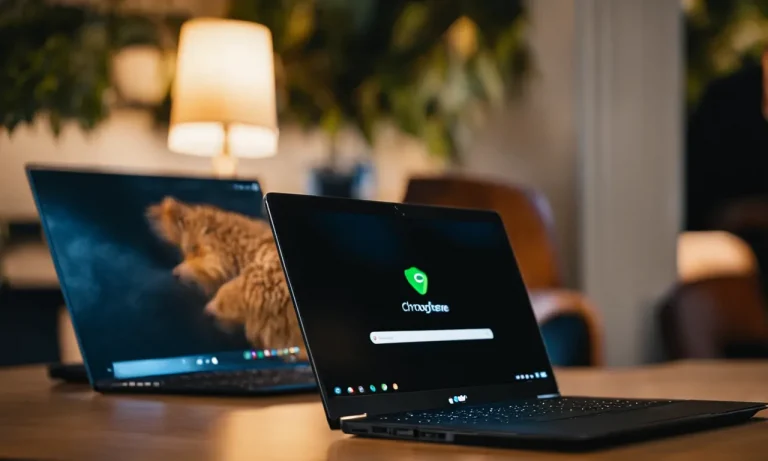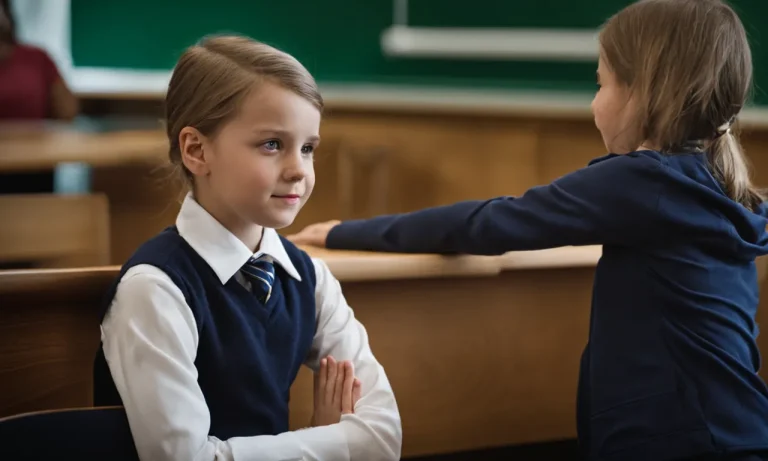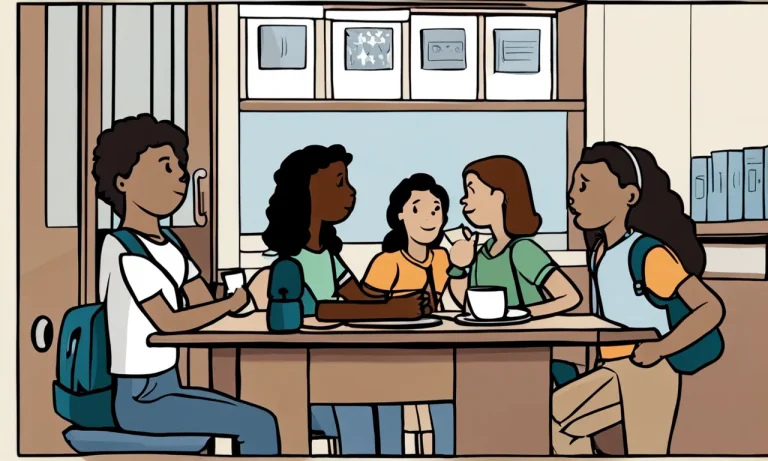In today’s multicultural society, public schools must balance upholding Constitutional principles with accommodating students’ diverse religious practices. The issue of whether Muslim students can pray in school has sparked much debate.
If you’re short on time, here’s a quick answer: Under certain guidelines, Muslim students are legally allowed to pray in public schools.
This article will examine the legal and ethical questions around Muslims praying in public schools. We’ll look at relevant court cases, laws protecting religious freedom, and best practices for schools to accommodate student prayer needs while maintaining a secular learning environment.
Legal Background on Religion in Public Schools
When it comes to religion in public schools, there are several legal considerations that come into play. It is important to understand the legal background to gain a clear understanding of what is allowed and what is not.
View this post on Instagram
Establishment Clause and Lemon Test
The Establishment Clause of the First Amendment to the United States Constitution prohibits the government from establishing or promoting any particular religion. This means that public schools cannot favor one religion over another or promote religious activities.
One test that is often used to determine if a government action violates the Establishment Clause is the Lemon Test. The Lemon Test has three prongs:
- The action must have a secular purpose
- Its primary effect must neither advance nor inhibit religion
- It must not result in excessive entanglement between government and religion.
This test helps to ensure that public schools remain neutral when it comes to religion.
Equal Access Act
The Equal Access Act, passed by Congress in 1984, allows religious groups to meet on public school grounds during non-instructional time, as long as the school allows other non-curricular groups to do so as well.
This means that if a public school permits clubs such as chess club or drama club to meet on campus, they must also allow religious clubs to meet.
This act ensures that religious students have the same opportunities as other students to gather and express their beliefs, while still maintaining the separation of church and state. It is important to note that these religious clubs must be student-led and cannot be directly controlled or sponsored by the school.
Title VI and Equal Treatment
Title VI of the Civil Rights Act of 1964 prohibits discrimination on the basis of religion in any program or activity that receives federal financial assistance. This means that public schools cannot discriminate against students based on their religious beliefs or practices.
Public schools must treat all students equally, regardless of their religious background. This includes allowing students to engage in religious activities such as prayer, as long as it is done in a non-disruptive manner and does not interfere with the rights of others.
It is important to note that while public schools cannot endorse or promote religion, they also cannot prohibit or interfere with the religious rights of students. Schools must strike a balance between religious freedom and maintaining a neutral environment for all students.
Court Cases Upholding Prayer Rights in School
Settled Precedent from Multiple Rulings
In the United States, the issue of prayer in public schools has been the subject of several court cases. Over the years, the courts have consistently upheld the rights of students to engage in voluntary, non-disruptive prayer in schools.
This means that Muslim students, just like students of any other faith, are allowed to pray in public schools as long as it does not disrupt the educational environment or infringe upon the rights of others.
One landmark case that established this precedent is the Engel v. Vitale case in 1962. In this case, the Supreme Court ruled that school-sponsored prayer in public schools violated the First Amendment’s Establishment Clause, which prohibits the government from establishing or endorsing a religion.
However, the Court made it clear that students have the right to pray on their own or in groups as long as it is not organized or led by school officials.
Another important case is the Lee v. Weisman case in 1992, where the Supreme Court ruled that public schools cannot invite clergy to give prayers at graduation ceremonies.
This decision further reinforced the principle that public schools must remain neutral in matters of religion.
These cases, along with others, have set a clear precedent that students have the right to engage in voluntary prayer in public schools. Muslim students, therefore, are afforded the same rights and protections as any other student when it comes to practicing their faith.
Requirements for School Prayer Accommodation
While students have the right to pray in public schools, it is important to note that there are certain requirements that must be met for prayer accommodation. Schools must ensure that prayer does not disrupt the educational environment or impose religious beliefs on others.
According to guidelines provided by the U.S. Department of Education, schools must make reasonable accommodations for students’ religious practices, including prayer. This may involve providing a designated prayer space, allowing students to briefly leave class for prayer, or allowing students to wear religious attire, such as headscarves, during school hours.
It is also important for schools to foster an inclusive and respectful environment for all students. This means that prayer should not be mandatory or promoted by school officials, and students of all faiths should be treated equally and without discrimination.
View this post on Instagram
Guidelines for Allowing Muslim Prayer in Schools
Provide Space for Prayer
When considering whether to allow Muslim prayer in public schools, it is important to provide designated spaces for prayer. This can be a quiet room or an area that can be easily transformed into a prayer space.
It is crucial to ensure that the space is clean, peaceful, and respectful to accommodate the needs of Muslim students.
Providing a safe and appropriate space for Muslim prayer not only fosters religious inclusivity but also promotes a sense of belonging among Muslim students.
It is a way to ensure that they can exercise their religious rights without compromising their education.
Accommodate Prayer Times
Muslims have specific prayer times throughout the day, and it is important to accommodate these times when allowing Muslim prayer in schools. This can be achieved by adjusting the school schedule or allowing students a few minutes of break time during their designated prayer times.
It is worth noting that accommodating prayer times is not only a matter of religious freedom but also promotes respect and understanding among students. By allowing Muslim students to pray, schools can foster a more inclusive and diverse learning environment.
Educate Staff on Religious Sensitivity
Another crucial aspect of allowing Muslim prayer in schools is to educate staff members on religious sensitivity. School administrators and teachers should receive training on the basic tenets of Islam and the importance of accommodating religious practices.
By promoting religious sensitivity, schools can create an atmosphere of respect and inclusivity for all students, regardless of their religious beliefs.
Addressing Criticisms and Concerns
Maintaining Separation of Church and State
One of the main concerns regarding Muslims praying in public schools is the potential violation of the principle of separation of church and state. This principle ensures that the government remains neutral in matters of religion and does not promote or favor any particular faith.
However, it is important to note that allowing Muslim students to pray in public schools does not violate this principle. In fact, it is a demonstration of religious freedom and inclusivity.
According to the First Amendment of the United States Constitution, individuals have the right to freely exercise their religion. This means that Muslim students, like students of any other faith, should be allowed to practice their religion in a non-disruptive manner.
It is worth mentioning that public schools can accommodate various religious practices without endorsing or favoring any specific religion. By providing a designated space for prayer or allowing students to use their free time for religious observance, schools can respect the religious rights of students while still maintaining the separation of church and state.
Preventing Disruption to Learning
Another concern often raised is the potential disruption to the learning environment if Muslim students are allowed to pray in public schools. However, it is important to recognize that schools already provide accommodations for various activities that may temporarily take students away from the classroom, such as bathroom breaks or extracurricular activities.
By establishing clear guidelines and procedures for prayer, schools can ensure that religious observance does not disrupt the learning process. For instance, students can be encouraged to pray during non-instructional time, such as lunch breaks or recess.
Additionally, schools can designate prayer rooms or quiet spaces where students can pray without causing disturbance to others.
It is also important to note that allowing Muslim students to pray in public schools can promote a sense of belonging and inclusion, which can positively impact their overall well-being and academic performance.
When students feel respected and supported in expressing their faith, they are more likely to thrive in the educational environment.
Being Fair to Students of All Faiths
One of the core principles of public education is to create an environment that is fair and inclusive for all students, regardless of their religious beliefs. Denying Muslim students the right to pray in public schools would be discriminatory and go against this principle.
By allowing Muslim students to pray in public schools, we are not only respecting their religious freedom, but also demonstrating our commitment to treating all students equally. It is essential to create an atmosphere of acceptance and understanding where students of different faiths can coexist harmoniously.
Moreover, by fostering an environment that accommodates various religious practices, schools can promote interfaith dialogue and cultural understanding among students. This can contribute to a more inclusive and tolerant society as a whole.
Conclusion
The Constitution guarantees students the right to practice their faith in school, within established guidelines. While public schools must remain secular, they also have an obligation to accommodate students’ religious exercise.
Making Muslim prayer available aligns with values of religious liberty, diversity, and inclusion that benefit all students and society.
With proper policies in place, schools can support Muslim students in fulfilling their prayer obligations without compromising educational goals. This upholds the vision of public schools where young people of every background can learn and thrive together.

